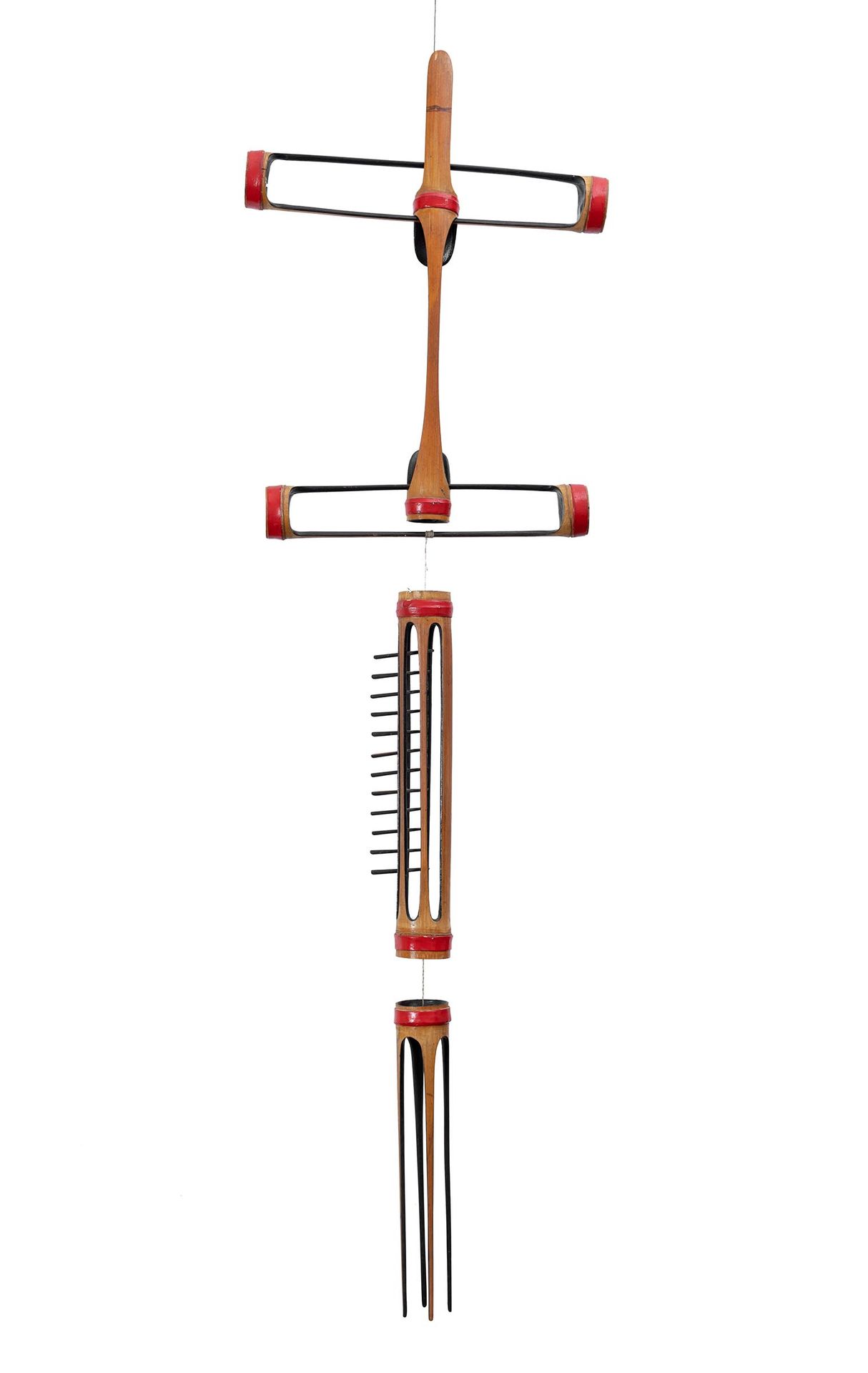Description
MOISÉS VILLÈLIA (Barcelona, 1928 - 1994). "Móvil (maquette)", Molló, 1978-1979. Bamboo. Attached certificate of authenticity issued by the artist's widow and son. Measurements: 130 x 37 x 37 cm. Moisés Sanmarón Puig, with the artistic name Villèlia, was a sculptor linked to the abstract movement, who initially identified himself with the artistic concerns of the Dau al Set group. He learned wood carving in the workshop of his father, a renowned craftsman, and during his childhood he received a rationalist education, which was interrupted by the outbreak of the Civil War. After the war, his family moved from Barcelona to Mataró. In 1945 Villèlia's interest in poetry was born, when he produced his first works, figurative wood carvings with expressively elongated and dynamic profiles. He exhibited his work for the first time in 1949 at the Museum of Mataró. Four years later, after working with his father on the woodwork for the chapel of Santa Anna in the city, he decided to devote himself fully to sculpture. During these years he produced his first non-figurative pieces, which adopted tubular forms, with channels and longitudinal perforations. He came into contact with the Barcelona art world, especially with the poet Rabasseda and the critic Alexandre Cirici, and in 1954 he held his first solo exhibition, again at the Museum of Mataró. He presented a selection of his early works, reliefs that combined the influences of modernism and Eastern philosophies, which had been a constant in his life since his reading as a teenager. In 1963 he devised the assemblages, pieces that could be combined according to the buyer's taste, and his growing interest in nets was awakened. With a scholarship from the French Institute in Barcelona, he moved to Paris in 1967. In the French capital he worked with perforated paper as the main material for his works. Two years later he moved to Argentina, where his brother, also a sculptor, lived, and finally settled in Quito, where he remained until 1972. When he returned to Spain he moved to the village of Molló, in Girona, where he devoted himself to making surrealist sculptures using willow wood and assemblages of objects, which gave his works from this period a certain humorous sense. He died in 1994, and in 1999 the IVAM in Valencia devoted an extensive retrospective exhibition to him. He is currently represented at the MACBA in Barcelona, the Museo Nacional Centro de Arte Reina Sofía and the Museo de Arte Contemporáneo Patio Herreriano in Valladolid.
57
MOISÉS VILLÈLIA (Barcelona, 1928 - 1994). "Móvil (maquette)", Molló, 1978-1979. Bamboo. Attached certificate of authenticity issued by the artist's widow and son. Measurements: 130 x 37 x 37 cm. Moisés Sanmarón Puig, with the artistic name Villèlia, was a sculptor linked to the abstract movement, who initially identified himself with the artistic concerns of the Dau al Set group. He learned wood carving in the workshop of his father, a renowned craftsman, and during his childhood he received a rationalist education, which was interrupted by the outbreak of the Civil War. After the war, his family moved from Barcelona to Mataró. In 1945 Villèlia's interest in poetry was born, when he produced his first works, figurative wood carvings with expressively elongated and dynamic profiles. He exhibited his work for the first time in 1949 at the Museum of Mataró. Four years later, after working with his father on the woodwork for the chapel of Santa Anna in the city, he decided to devote himself fully to sculpture. During these years he produced his first non-figurative pieces, which adopted tubular forms, with channels and longitudinal perforations. He came into contact with the Barcelona art world, especially with the poet Rabasseda and the critic Alexandre Cirici, and in 1954 he held his first solo exhibition, again at the Museum of Mataró. He presented a selection of his early works, reliefs that combined the influences of modernism and Eastern philosophies, which had been a constant in his life since his reading as a teenager. In 1963 he devised the assemblages, pieces that could be combined according to the buyer's taste, and his growing interest in nets was awakened. With a scholarship from the French Institute in Barcelona, he moved to Paris in 1967. In the French capital he worked with perforated paper as the main material for his works. Two years later he moved to Argentina, where his brother, also a sculptor, lived, and finally settled in Quito, where he remained until 1972. When he returned to Spain he moved to the village of Molló, in Girona, where he devoted himself to making surrealist sculptures using willow wood and assemblages of objects, which gave his works from this period a certain humorous sense. He died in 1994, and in 1999 the IVAM in Valencia devoted an extensive retrospective exhibition to him. He is currently represented at the MACBA in Barcelona, the Museo Nacional Centro de Arte Reina Sofía and the Museo de Arte Contemporáneo Patio Herreriano in Valladolid.
